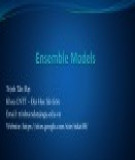
22 CHAPTER 1 ■ DEVELOPMENT BEST PRACTICES
Report Pagination Style
Different report pagination styles will affect the performance in displaying the report. For
example, some of the pagination styles will display something like “Row Ranges X to Y of Z,”
If you do not need to display how many total rows are returned from the query, you should
choose to use a pagination style that displays only “Row Ranges X to Y.”
Error and Exception Handling
Your APEX application can use many different anonymous PL/SQL blocks, functions, proce-
dures, and packages when it is executing. If an error or exception occurs during the execution
of some code, you need to be able to handle that error or exception gracefully, in such a fashion
that flow of execution by the APEX engine is not broken. For example, the following code
catches the exception and sets the value of an application item:
declare
v_salary INTEGER;
begin
select
salary
into
v_salary
from
emp
where
empno = :P1_EMPNO;
return v_salary;
:APP_ERROR_MSG := null;
exception
when no_data_found then
:APP_ERROR_MSG := 'Could not find the employee record.';
end;
You can then display the application item on the page in an HTML region using this
syntax:
&APP_ERROR_MSG.
You would then create a branch on the page to branch back to itself if the value of the
application item is not null, thereby enabling the user to see the error and correct it.
Packaged Code
APEX allows you to write SQL and PL/SQL code directly in a number of places via the Applica-
tion Builder interface. For example, suppose you create the following after-submit process in
your login page to audit that a user logged in to the application.

CHAPTER 1 ■ DEVELOPMENT BEST PRACTICES 23
begin
insert into tbl_audit
(id, user_name, action)
values
(seq_audit.nextval, :APP_USER, 'Logged On');
end;
Now, while this would work, it also means that if you ever want to modify the logic of the
auditing, you need to change the application. For example, notice that you aren’t currently
storing a timestamp of when the audit action was performed. To add that functionality, you
would need to modify the tbl_audit table and add an extra column to store the timestamp
information (if that column did not already exist), and then edit the application to change the
PL/SQL page process to include the timestamp information, like this:
begin
insert into tbl_audit
(id, ts, user_name, action)
values
(seq_audit.nextval, sysdate, :APP_USER, 'Logged On');
end;
So, potentially for a very simple change, you might need to modify the application in
development, export a new version of the application, import that version into a test environ-
ment, and so on through to production.
A much more efficient way is to try to isolate the number of places you directly code logic
into your application by placing that code into a package, and then calling the packaged pro-
cedure or function from your application. For example, you could change the PL/SQL page
process to simply do this:
begin
pkg_audit.audit_action('Logged On');
end;
This allows you to encapsulate all of the logic in the packaged code. Assuming you are not
making fundamental changes to the package signature, you can modify the internal logic with-
out needing to change the application. This design would allow you to change the table that the
audit information is stored in or to add new columns and reference session state items without
needing to change anything in the application itself. All you would need to do is recompile the
new package body in the development, test, or production environment. This would result in
much less downtime for the application, since you no longer must remove the old version of
the application and import the new version. Using this method really does allow downtimes of
just a few seconds (the time it takes to recompile the package body), as opposed to minutes, or
potentially hours, while new versions of the applications are migrated.
Obviously, you won’t always be able to completely encapsulate your logic in packages.
And sometimes, even if you do encapsulate the logic, you may need to change something in the
application (for example, to pass a new parameter to the packaged code). However, it is good
practice to use packaged logic where you can. Using packaged code can save you a lot of time
later on, as well as encourage you to reuse code, rather than potentially duplicating code in a
number of places throughout your application.

24 CHAPTER 1 ■ DEVELOPMENT BEST PRACTICES
Summary
This chapter covered some best practices for using APEX. You don’t need to follow our advice.
Many people just charge in and begin coding without thinking to lay a solid foundation for
their work. Some of what we advocate in this chapter may actually slow you down at first, but
it will save you time in the long run. Helping you to work more efficiently, and taking a long-
term view of doing that, is one of the reasons we’ve written this book.

25
■ ■ ■
CHAPTER 2
Migrating to APEX from Desktop
Systems
Many organizations come to rely on systems that have been built using desktop applications
such as Microsoft Excel, Access, and similar tools. For example, employees might store their
own timekeeping data in an Excel spreadsheet, which is sent to the payroll department each
month, or the sales department might keep all its customer details in an Access database.
These applications often begin as simple data-entry systems, but evolve over time as more
functionality is added or the business rules regarding the data change. Using desktop-based
systems to manage data has a number of drawbacks, such as the following:
• Each person who wants to work with the data needs to install the client software (for
example, Excel) on his machine.
• Data cannot be easily shared with other applications.
• In the case of Excel, only one person can be in control of the data at once.
• It is difficult to manage the changes made by people working with their own copy of the
data.
• The data might not be backed up as part of any regular backup procedures.
• It can be difficult to establish and restrict exactly who has access to the data.
• There is no fine-grained control over what data a user is allowed to view and modify.
• Confidential data can be taken off-site by a user, via an e-mail attachment or by copying
a spreadsheet onto a USB key, for example.
By using APEX, you can avoid many of these issues. Users won’t need to install any dedi-
cated client software, because all they will need to use your APEX application is a supported
browser. You can store the data centrally within the Oracle database, which enables it to be
backed up as part of your regular database backup policy (for example, if you perform database
backups using RMAN, the application data will also be backed up).
You can also use features such as Fine-Grained Access Control (FGAC) to control the data
users are allowed to access. When you combine this with auditing, you will not only be able to
control exactly what data users can access, but you will also have an audit trail of what data
they did access.

26 CHAPTER 2 ■ MIGRATING TO APEX FROM DESKTOP SYSTEMS
We want to stress that APEX is capable of far more than just being an Excel or Access
replacement. You really are limited only by your imagination in the applications that you can
create. However, many existing Excel and Access systems could benefit from being replaced by
APEX applications, so it can be a great place to begin learning how to take advantage of this
powerful and rapid development tool.
Excel Migration
In this section, we will demonstrate how you can take an existing Excel spreadsheet and
convert it into an APEX application. The sample spreadsheet, shown in Figure 2-1, is used
to document the status of bugs that have been reported in another application. Each bug is
assigned to a developer, and the status of the bug is changed from open to closed when that
bug has been fixed.
Figure 2-1. Bug report spreadsheet
The existing spreadsheet solution suffers from many of the drawbacks mentioned at the
beginning of this chapter, particularly the fact that only one person at a time can be in control
of changing the spreadsheet. Typically in this sort of scenario, one person is tasked with main-
taining the spreadsheet, and might receive the bug reports from the testing team via e-mail.
When a bug report e-mail message is received, the person in charge of maintaining the spread-
sheet adds the bug to the list and looks for a developer to assign the bug to, usually based on
who has the least number of open bugs (which is far from an ideal way to measure how busy
the developers are!). The spreadsheet maintainer might send weekly or monthly updates to let
people know the status of the bugs at that point in time.
Clearly, this sort of system could be improved by removing the potential bottleneck of the
spreadsheet maintainer needing to collate all of the data. If the testing team members were
allowed to enter new bugs directly into the system themselves, the bugs would appear in the
report immediately. Also, if the developers could select which bugs to work on, rather than
having bugs assigned to them, they would likely pick ones related to the areas of the system
they know well.


























